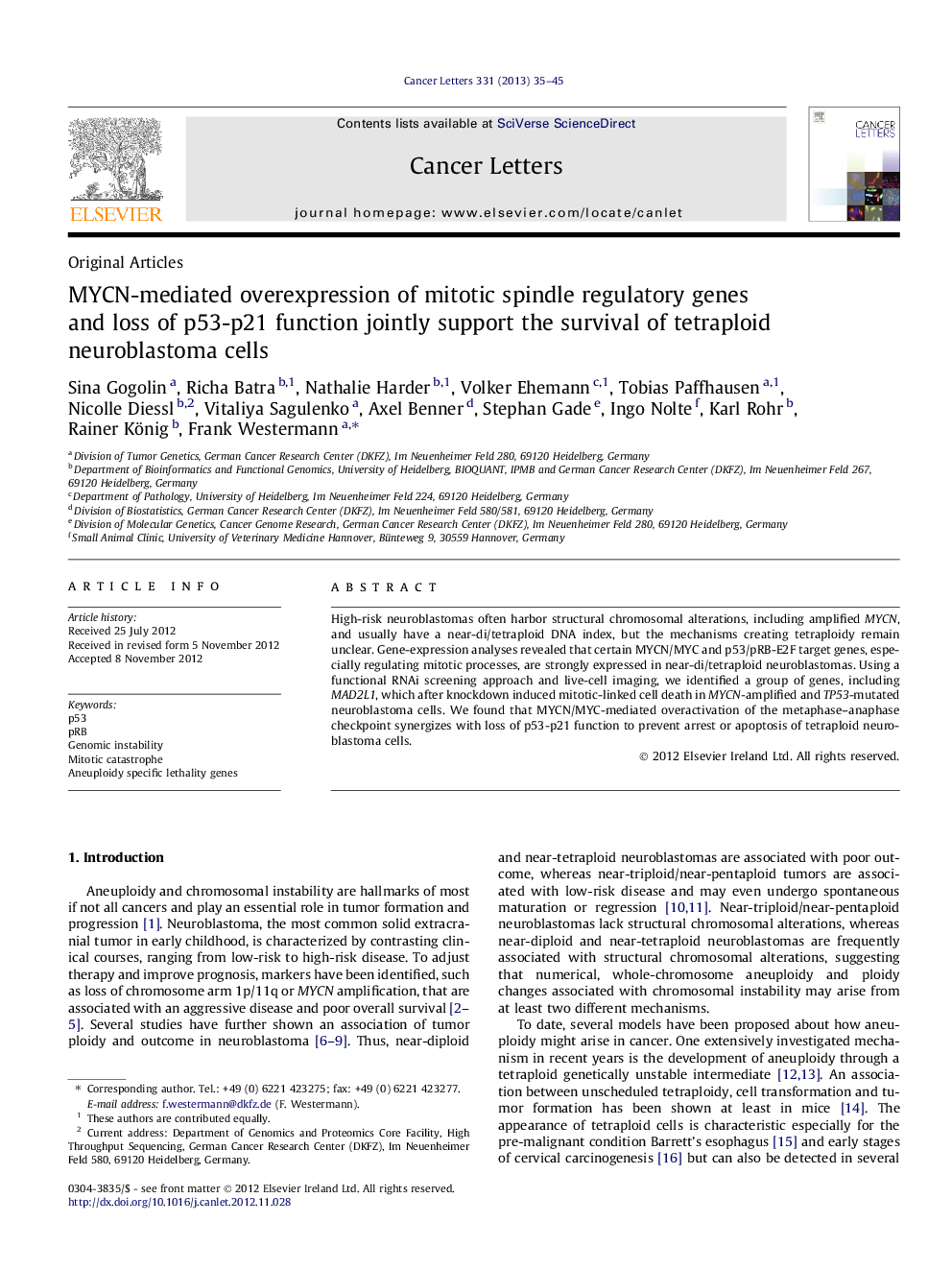| Article ID | Journal | Published Year | Pages | File Type |
|---|---|---|---|---|
| 2113067 | Cancer Letters | 2013 | 11 Pages |
High-risk neuroblastomas often harbor structural chromosomal alterations, including amplified MYCN, and usually have a near-di/tetraploid DNA index, but the mechanisms creating tetraploidy remain unclear. Gene-expression analyses revealed that certain MYCN/MYC and p53/pRB-E2F target genes, especially regulating mitotic processes, are strongly expressed in near-di/tetraploid neuroblastomas. Using a functional RNAi screening approach and live-cell imaging, we identified a group of genes, including MAD2L1, which after knockdown induced mitotic-linked cell death in MYCN-amplified and TP53-mutated neuroblastoma cells. We found that MYCN/MYC-mediated overactivation of the metaphase–anaphase checkpoint synergizes with loss of p53-p21 function to prevent arrest or apoptosis of tetraploid neuroblastoma cells.
► Neuroblastomas with DNA indices between 1.0 and 1.11 or 1.77 and 2.11 are correlated with poor patient outcome. ► Near-di/tetraploid neuroblastomas highly express MYCN/MYC and p53/pRB-E2F target genes involved in mitosis regulation. ► Loss of p53-p21 function is associated with tetraploidization in neuroblastoma cells. ► Selective inhibition of mitosis-regulating genes, such as MAD2L1, causes apoptosis in MYCN-amplified and TP53-mutant cells.
